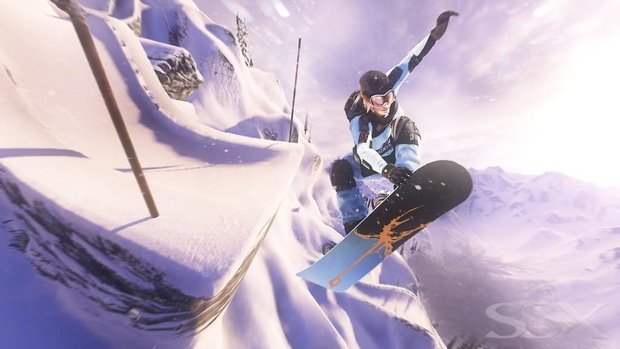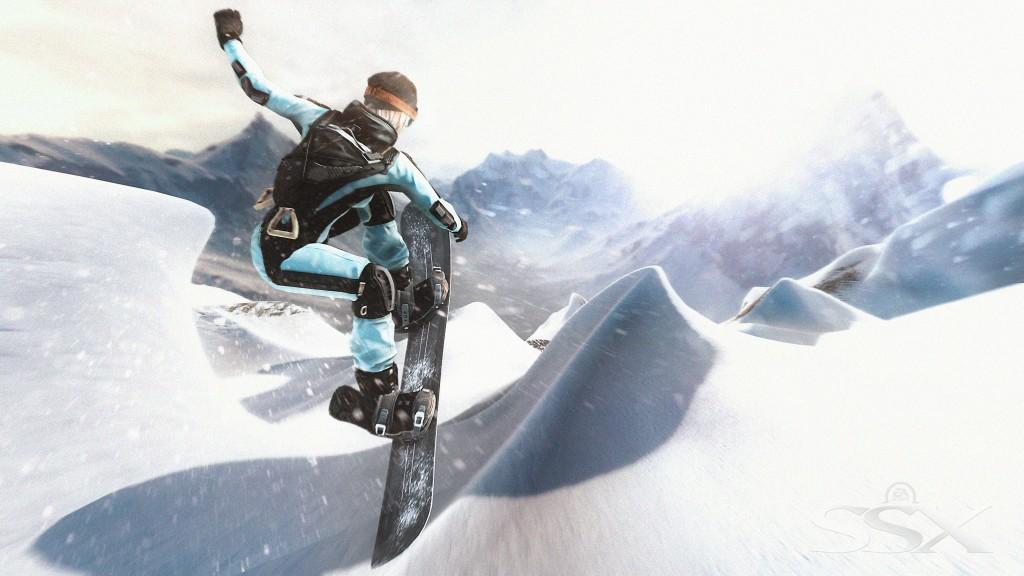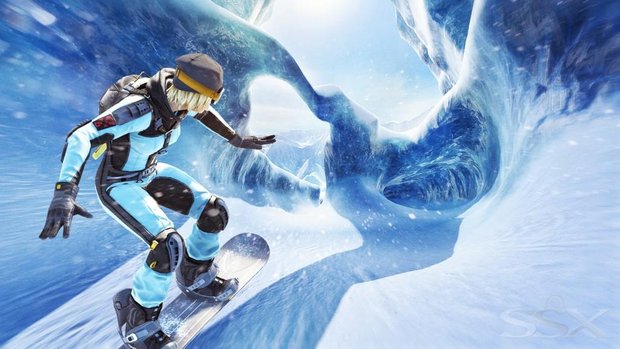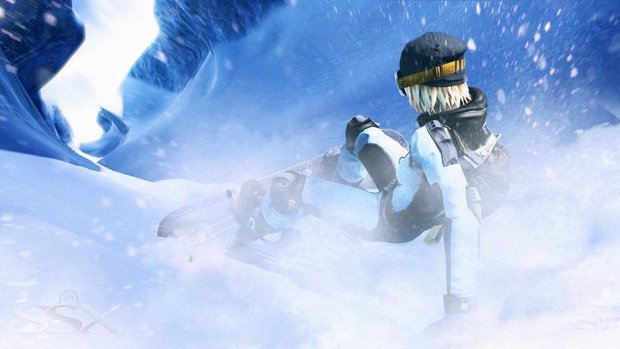SSX: The anally-retentive series purists hands-on
We know how it works now, but how does it FEEL?
(Over)Friendly Physics
SSX’s new physics are great. I love them. Like I said, they instantly welcome you home like a big roaring log fire on a bitterly cold day, but much like a big roaring log fire augmented by a robot butler bringing you warm, creamy, alcohol-based drinks, they’re immediately comforting but also new and improved.

They make even the stupendously dynamic reactions of SSX3’s riders and world feel a little canned and stiff. Where previously you had to accept that however fast your descent and however well-calculated your angle of attack, certain surfaces just would not want to be friends, in this new SSX it feels like anything really is possible as long as you have the skills and understanding to pull it off.
Those long, flat hills that would always slow you to a crawl as they consumed your best efforts at elevation in their deceptively soft, knee-deep snow? Enough speed and a lucky bunny hop, and you might well have a chance now. Those sharp, vertical inclines that would bring you to an unapologetic deceleration sharp enough send your skull through your face? Hit them right and you’ll hurtle up them like a tidal wave shooting up a coastal barrier wall. More organic, more options. That’s basically how it works. One problem though…

All of this extra fluidity, at least in the build I played, actually made things a little too easy. In fact so accommodating were the physics that I found it impossible to wipe out. Every SSX player worth his or her salt knows the instant smug-to-miserable transition that comes when they launch into an overly ambitious air-combo, only to realise that they don’t have quite the elevation necessary and have committed to a lengthy Uber finish that lands at the wrong angle. None of it here. Multiple times I braced for a nasty crump. Multiple times my beloved Kaori found a magic angle through which to ride off scott-free. Obviously this stuff is going to be tweaked along the route to SSX’s February release, but I did find the lack of ability to break myself a little disconcerting. Don’t worry about this side-effect too much yet though. In every other respect SSX’s new physics are an absolute joy. Which is great, because...
Track design is a wilderness playground
It’s a shame that I’ve always used the “more organic, more options” description, because it’s a perfect fit for describing SSX's track design as well. Look, just ignore the fact that I used it in the previous section, take the quotation marks away with your mind and pretend it’s fresh, alright? Right.

While the parallel routes and obvious path branches of the previous SSXes were notably absent from the overground mountainside on which I made my run, that doesn’t mean that the possibilities were limited. They just weren’t as obvious or prescribed. While clear jumps, cliffs, grind opportunities, ridges and naturally-occurring half-pipes are as prevalent as they ever were in SSX3’s Back Country stages, there are way more of them now, way less sense of a particular direction being the ‘correct’ route, and barely any sense of funnelling.
Changing path is now simply a case of spotting the opportunities in the environment and harnessing the freer physics this time around in order to get to where you want to be. It’s more improvisational and more respectful of player input and imagination. Rarely ever did I feel committed to any particular path I found myself on. You could be exploring these tracks for weeks to find the optimum route, and months if you want to find everything. Imagine the scale of the old Back Country being stretched out about three times, and then having all the new empty bits filled out with extra stuff. That’s the feel I got from my run.
Sign up to the GamesRadar+ Newsletter
Weekly digests, tales from the communities you love, and more

Though for all of the wilderness-driven approach taken by SSX, I fully expect other courses to make more use of specific paths and cross-over points. We’ve already seen subterranean tunnel networks and heard about races down into the mouth of a dormant volcano, so I’m not assuming a free-roaming, go-anywhere approach for the entire game. And I’m happy not to, to be honest. There’s a lot to be said for perfecting your lines on well-practiced linear routes, and there needs to be at least some semblance of structure if races are going to remain races rather than becoming high-speed orienteering exercises. If SSX can strike a solid balance between freedom and set-piece track design, we’ll be onto a massive, massive winner. And to end on one final, but possibly most important point for serious fans...
Rest easy. It has the SSX ambience. Almost
Again, this is all-important to SSX. This series, as I’ve been at pains to point out all the way through this preview, is not just about game mechanics and its list of features. It’s about feel and sensory feedback, and without the right ambience, a new SSX would be a bit of a disappointment. Fortunately, I don’t think this one will be.
The visuals I’ve seen so far have exactly the right blend of pristine-white, natural perfection and stylised, over-saturated colour-pop. Yes, I certainly do miss the prevalence of man-made structures from the previous games. The neon, fireworks and big blue half-pipes gave SSX a festival atmosphere like no other series, and without them, things do feel a little barren. Between the vibrant colour palette, smooth, kinetic camera, beaty soundtrack and OTT special effects when filling up the Tricky guage and landing massive stunts, this is definitely SSX, fear not of that. But I still miss my neon and fireworks, damnit.
But of course, I’ve only played one course so far. And we’ve seen screenshots of vivid red lighting inside an underground cave already, so I suspect that EA Canada is going to be pushing as much of the stylised synthetic as it can into its sprawling natural environments. And once the soundtrack is complete, and all of the dynamic remix effects pioneered by SSX3 are cranked up to twelvety, I suspect that authentic SSX feel is going to get one hell of a boost.
September 22, 2011



